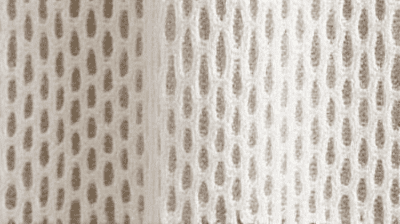How to Care for Delicate Fabrics Without Ruining Them

Delicate fabrics are a cherished part of many wardrobes, offering elegance and comfort. However, they also require special attention and care to maintain their beauty and integrity. Whether it’s a luxurious silk blouse, a sheer lace dress, or a soft cashmere sweater, understanding how to care for these fabrics is essential to prolonging their lifespan and keeping them looking their best.
Understanding Delicate Fabrics
What Are Delicate Fabrics?
Delicate fabrics refer to textiles that are lightweight, thin, or made from fragile fibers. Common examples include:
Silk: Known for its luxurious feel and sheen, silk is highly susceptible to damage from heat and harsh chemicals.
Lace: Often used in garments as detailing, lace can easily tear or fray if not handled carefully.
Cashmere: A soft wool obtained from cashmere goats, it’s sensitive to washing techniques and can pill easily.
Chiffon: This lightweight, sheer fabric is often used in dresses and scarves but can tear easily if not treated gently.
Satin: With a smooth surface and sheen, satin is easy to snag and requires gentle care.
Tulle: A lightweight netting often used in formal wear and skirts, it can be very delicate and prone to tearing.
Common Characteristics of Delicate Fabrics
Sensitivity to Temperature: Delicate fabrics often react poorly to high temperatures, leading to shrinkage, fading, or damage.
Prone to Wear and Tear: These fabrics are typically more susceptible to snags, pulls, and tears than sturdier textiles.
Need for Special Care: Many delicate fabrics cannot withstand the same washing and drying processes as more durable materials.
General Care Guidelines for Delicate Fabrics

Caring for delicate fabrics requires a mindful approach. Here are essential principles to follow for overall care:
1. Read Care Labels
Always check the care label attached to your garment. It provides valuable guidance on the appropriate washing techniques, water temperature, and drying methods tailored to the specific fabric.
2. Handle with Care
When handling delicate items, be gentle. Avoid pulling or stretching the fabric, as this can lead to distortions and damage.
3. Avoid Harsh Chemicals
Many delicate fabrics can be sensitive to bleach or harsh detergents. Opt for gentle detergents specifically designed for delicate or hand-wash items.
Washing Delicate Fabrics
Hand Washing
Hand washing is typically the safest method for cleaning delicate fabrics. Here's how to do it effectively:
How to Hand Wash Delicate Fabrics
Prepare Clean Water: Use cool or lukewarm water based on the care label. Avoid hot water, as it can damage delicate fibers.
Add Detergent: Use a gentle detergent designed for delicate items. Mix it into the water until dissolved.
Submerge Fabric: Place your delicate item into the water, gently agitating it with your hands. Avoid scrubbing or twisting.
Soak: Allow the fabric to soak for about 10-15 minutes. This helps loosen dirt and stains.
Rinse Thoroughly: Drain the soapy water and rinse the fabric under cool running water until all detergent is removed.
Press Water Out: Gently press the fabric to remove excess water. Do not wring or twist, as this can cause damage.
Lay Flat to Dry: Place the item on a clean, dry towel and roll it up to absorb additional moisture. Then, lay it flat on a drying rack or clean surface.
Machine Washing
If the care label indicates it’s safe to machine wash, follow these guidelines:
How to Machine Wash Delicate Fabrics
Use a Mesh Laundry Bag: Place delicate items in a mesh laundry bag to prevent snagging or entanglement with other clothes.
Select the Right Cycle: Use a short, gentle cycle, often labeled as “delicates” or “hand wash” on most machines.
Cold Water: Always wash in cold or lukewarm water to prevent damage.
Gentle Detergent: Use a mild detergent formulated for delicate fabrics, avoiding harsh chemicals and bleach.
Avoid Overloading: Do not overload the washing machine; ensure there is enough space for garments to move freely.
Spot Cleaning
For minor stains or dirt, consider spot cleaning before washing the entire garment.
How to Spot Clean
Identify the Stain: Determine the type of stain and select an appropriate treatment method.
Use a Gentle Cleaner: Apply a small amount of gentle detergent or a specialty stain remover to the stained area.
Blot, Don’t Rub: Use a clean cloth or sponge to blot the stain gently. Rubbing can worsen the damage.
Rinse with Water: Dab the area with a cloth dampened in water to remove any detergent residue.
Air Dry: Allow the spot to air dry naturally to avoid heat damage.
Drying Delicate Fabrics

Air Drying
Air drying is the safest method for drying delicate fabrics. Here’s how to do it effectively:
Tips for Air Drying
Reshape Garments: Gently reshape the fabric after washing to maintain its original form.
Flat Drying: Lay the garment flat on a clean, dry towel away from direct sunlight, as UV rays can fade colors over time.
Hanging Drying: If necessary to hang, use padded hangers to prevent stretching at the shoulders and hang items in a well-ventilated area.
Avoid Fabric Softeners: Do not use fabric softeners on delicate fabrics, as they can leave residues that affect the fibers.
Tumble Drying
Many delicate fabrics should never be machine dried, but if it's safe according to the care label:
How to Safely Tumble Dry
Use a Low Heat Setting: Set your dryer to the lowest heat setting possible, or use a delicate cycle if available.
Use Dryer Balls: Adding dryer balls can help reduce drying time and prevent clumping, ensuring more even drying.
Remove While Damp: Take the garments out before they are fully dry. This helps prevent shrinking and allows you to air dry the remaining moisture.
Storing Delicate Fabrics
Proper storage is just as important as cleaning. Follow these tips to ensure your delicate items remain in great shape.
1. Clean Before Storing
Always wash delicate items before storing them, as dirt and stains can attract pests and cause damage over time.
2. Use Breathable Garment Bags
Store delicate fabrics in breathable garment bags or cotton storage bags. Plastic covers can trap moisture, leading to mildew and deterioration.
3. Avoid Hangers for Heavy Fabrics
For heavier items like cashmere sweaters, consider folding instead of hanging to prevent stretching.
4. Keep in a Cool, Dry Place
Store delicate garments away from direct sunlight and in a temperature-controlled environment to prevent fading and degradation.
5. Use Cedar Blocks or Lavender Sachets
To deter moths and insects, place cedar blocks or lavender sachets in drawers or storage bins with your delicate fabrics.
Maintaining Delicate Fabrics

Regular Care
Inspect Regularly: Check your delicate fabrics regularly for any signs of damage, such as fraying, staining, or discoloration.
Pill Removal: Use a lint shaver or a fabric comb to gently remove any pilling on cashmere or wool garments. Be careful not to damage the fibers.
Steam or Press Carefully: For wrinkle removal, use a steamer on a low setting or an iron with a pressing cloth to protect the fabric. Always test in an inconspicuous area first.
Addressing Specific Issues
Dealing with Yellowing: If white delicate fabrics start to yellow, consider using a mixture of hydrogen peroxide and water as a gentle bleach alternative. Test on a hidden area first.
Avoiding Snags: Beware of roughly surfaced furniture or jewelry that can snag delicate garments. Always check for sharp edges before wearing.
Fading Colors: To prevent fading, wash clothes inside out and avoid exposing them to direct sunlight while hanging to dry.
Special Considerations for Different Fabrics
Silk Care
Avoid Water: When possible, dry clean silk. If you must wash it, use the hand wash method with cool water.
Store Away from Light: Protect silk from sunlight exposure when storing to prevent fading.
Lace Care
Gently Wash: Use a mesh laundry bag and hand wash or wash on a delicate cycle in the machine.
Avoid Heavy Weights: When wearing, avoid heavy accessories that can snag or pull the lace.
Cashmere Care
Regular Washing: Cashmere should be washed after a few wears. Hand wash it gently and reshape while damp.
Storage: Always store cashmere folded and avoid hanging to prevent stretching.
Chiffon Care
Gentle Handling: Use gentle settings for washing. Chiffon can be particularly prone to tearing, so handle with care.
Steam to Remove Wrinkles: Use a steamer instead of an iron to remove wrinkles from chiffon without crushing the fabric.
Common Myths About Delicate Fabrics
Myth 1: Delicate Fabrics Can Only Be Dry Cleaned
While some delicate items require dry cleaning, many can be hand washed safely at home. Always check the care label for instructions.
Myth 2: Water Ruins All Delicate Fabrics
Water is not inherently damaging to delicate fabrics; it’s the temperature and insufficient care that cause harm. Proper washing techniques can keep these fabrics in excellent shape.
Myth 3: Fabric Softeners are Essential for Delicates
Fabric softeners can leave a residue on delicate fabrics, affecting their texture and breathability. It’s best to avoid them for items like silk and wool.
Myth 4: All Delicate Fabrics Should Be Ironed
Many delicate fabrics can be steamed instead of ironed. Ironing can often lead to shine marks or damage if the wrong temperature is used.
Conclusion
Caring for delicate fabrics does not have to be daunting. By understanding their unique properties, employing proper washing techniques, and following guidelines for drying and storage, you can keep your delicate garments looking pristine for years to come.
Whether you are handling silk blouses, cashmere sweaters, or embroidered lace dresses, taking the necessary precautions will ensure that each piece remains as beautiful as the day you bought it. Remember, the investment in time and care pays off in the form of quality and longevity for your cherished fabric items.
With this comprehensive guide, you are now equipped with the knowledge needed to care for delicate fabrics without ruining them. Embrace the joy of wearing your favorite delicate garments knowing you have the skills to keep them looking their best!


